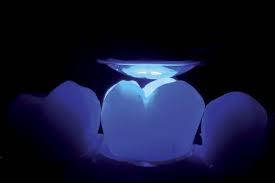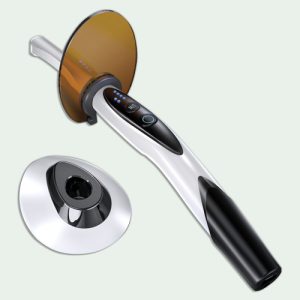Easy Steps For Successful Light Curing Of Composite Resin
Dentistry has been revolutionized over the last 50 years and this has led to the convenience of getting rapidly light cure led curing light.
Photo-activated dental materials including resin-based cement, composites and sealants are an integral part of the daily dental routine. Dental composite light curing units are hand-held light emitting devices used to cure such photo-activated polymer-based restorative materials.

Just like the restorative materials, composite curing lights have come a long way and over a period drastic changes are being seen in size, shape, power, source, and more.
The proper cure is important:
An improperly cured composite can cause pressure differences along the dentinal tubules. Improper curing can also lead to marginal degradation and even fracture of the material. It’s not just a matter of holding the light over the tooth. There are several factors to take into consideration when thinking about how composite curing light affects your restoration.
Factors that aids in Successful curing of composite resin:
Light Intensity:
The first thing is the light intensity. Most lights currently available in the market have a strong intensity of about 1000mw/cm2. However, this intensity can drop over a period if you are not monitoring your light regularly and checking their output.
The intensity of the beam allows for deeper penetration of the photons in the material. So the darker composite shades absorb more and so they must be placed in thinner layers and cured using more cycles. Conversely lighter composite shades allow for greater depth of cure and can be placed in thick layers. Also the light intensity varies as in case of post and core or intensity required is more, whereas for restoration intensity required is less to avoid risk of increase in pulpal temperature & pulp necrosis.
Curing beam profile
Beam profile is the distribution of blue light from the light probe. There should be even distribution of the light on all the areas of the composite to avoid any trapped air bubble or uneven curing of the composite is a major factor in failure of most Class II Composite restorations near the gingival margin that is at the higher risk of secondary caries.
The light from the tip should be more focussed and concentrated for even polymerization of the composite resin. Along with this the advanced light cure devices having polywave technology that allows not only blue light but the blue-violet beam that successfully cure many upgraded composite resins.
Wavelength of the Light Cure Unit:
Recently new photo initiators have been introduced which are sensitive to light output, that is known as TPO, a nanoparticle photo-initiator. It gets absorbed at the narrow wavelength range of 380 – 405nm. The commonly used light cure devices have the wavelength range of 420 – 470nm that is insufficient for the adequate curing of the resin containing TPO. TPO is one of the polymers that may be polymerized in thick layers, which speeds up the restoration process.
How Composite Restoration should be performed?
The composite restoration is a technique sensitive process and to avoid any form of polymerization shrinkage, multi-step curing is a must for large cavities.
The prepared cavity to be restored should be properly accessible with proper positioning of the light probe.
The light tip should be as close and perpendicular to the target. If the tip is smaller, multi-step polymerization is must.
Also the light source must be stabilized to deliver adequate energy. Also multi step placement of composite reduces the chances of air entrapment, thus giving a complete seal.
Woodpecker DTE O-Light Plus:
 DTE O-Light plus by Woodpecker provides high precision, high intensity focused light for effective polymerization of resin material as it contains the new style photo initiator TPO. With the newly upgraded blue-violet light, the new style photo-initiator can also be cured effectively. The biggest advantage of O light plus is 1 second curing with upgraded focus light output for better curing & deeper penetration in cases like post & core, veneers & orthodontic brackets placement. Along with this the ergonomic design with modes & time setting make it convenient to use. The curing becomes faster and efficient without any chances of polymerization shrinkage or marginal leakage.
DTE O-Light plus by Woodpecker provides high precision, high intensity focused light for effective polymerization of resin material as it contains the new style photo initiator TPO. With the newly upgraded blue-violet light, the new style photo-initiator can also be cured effectively. The biggest advantage of O light plus is 1 second curing with upgraded focus light output for better curing & deeper penetration in cases like post & core, veneers & orthodontic brackets placement. Along with this the ergonomic design with modes & time setting make it convenient to use. The curing becomes faster and efficient without any chances of polymerization shrinkage or marginal leakage.
Conclusion:
DTE O-Light plus seems to be one of the best composite curing light option based on the advanced features of good working wavelength, ergonomic design and the upgraded wider wave spectrum.





Leave a comment